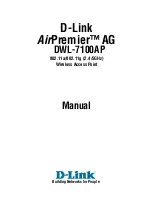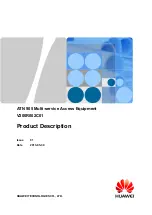
22
Introduction
For example, when downloading a file, administrators enter the
download
CLI Command along with IP Address, file
name, and file type parameters.
•
If necessary, use the CLI with your computer’s serial port to assign an IP address to your AP.
•
The CLI provides configuration and management access for most generic Telnet and Terminal clients. Use
the CLI through your computer serial port, over your LAN, over the Internet, or with a “crossover” Ethernet
cable connected directly to your computer.
Details of the CLI commands used to manage the AP-2500 along with syntax and specific parameters names can be
found in
Using the Command Line Interface
.
SNMP Management
In addition to the Web and the CLI interfaces, you can also manage and configure an AP-2500 using the Simple
Network Management Protocol (SNMP). Note that this requires an SNMP manager program, like HP Openview or
Castlerock’s SNMPc.
The AP-2500 supports several Management Information Base (MIB) files that describe the parameters that can be
viewed and/or configured over SNMP:
–
MIB-II (RFC 1213)
–
Ethernet-like MIB (RFC 1643)
–
ORiNOCO Enterprise MIB
–
Nomadix MIB (for Public Space and IP features)
–
IEEE 802.11 MIB
Proxim provides these MIB files on the AP-2500 CD. You need to compile one or more of the above MIBs into your
SNMP program’s database before you can manage the AP-2500. Refer to the documentation that came with your
SNMP manager for instructions on how to compile MIBs.
The ORiNOCO and Nomadix MIB files define the read and read-write objects that can be viewed or configured using
SNMP. These objects correspond to most of the settings and statistics that are available with the other management
interfaces.
The ORiNOCO Enterprise MIB controls the following settings:
•
All of the Networking parameters found under the
Configure
heading within the Web browser interface
(described in
Network Parameters
), except for the following features:
—
IP Configuration
—
DHCP Server
—
DNS Server
—
VPN/iNAT (Intelligent Address Translation)
















































